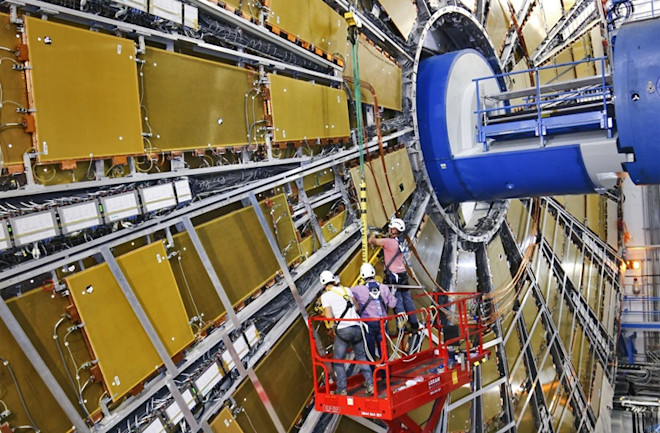On the outskirts of Geneva, Switzerland, some 300 feet underground, is the biggest, most complicated machine ever built. With about 1,200 giant superconducting magnets, multiple-ton detectors, a worldwide computing grid and a staff of thousands, the Large Hadron Collider is an international undertaking beyond the means of any single nation. The project’s mission: to see what happens when protons collide at 99.99999 percent of the speed of light in a 17-mile-long circular tunnel.
The LHC started operating in 2008, yet for some physicists it only recently began to live up to its name. “I called it the Little Hadron Collider,” says Maria Spiropulu, an experimental physicist at the California Institute of Technology, “because during its first run, it only operated at half-energy.” That changed in April when the accelerator fired up again after a two-year shutdown dedicated to nearly doubling the energy of its proton beams. Now physicists are anticipating a new era of discoveries from a machine that will dominate experimental particle physics for at least another two decades.
PART 1: The Greatest Machine of All Time
Even before its upgrade, the LHC managed to shake up the physics world. On July 4, 2012, seven months before the machine’s hiatus, physicists announced they had discovered the particle that the $4.9 billion accelerator had been hunting: the Higgs boson. The particle’s existence was first predicted 50 years ago by several physicists working independently, including Peter Higgs at the University of Edinburgh, as a solution to what had been one of the most vexing mysteries in physics: How do particles acquire mass?
For those of us who aren’t physicists, the question barely seems worth asking. Isn’t mass simply a given, a basic feature of matter? No, it turns out. Some properties of particles — the negative electric charge on an electron or the positive charge on a proton, for example — are intrinsic to the particle itself. But not mass.

